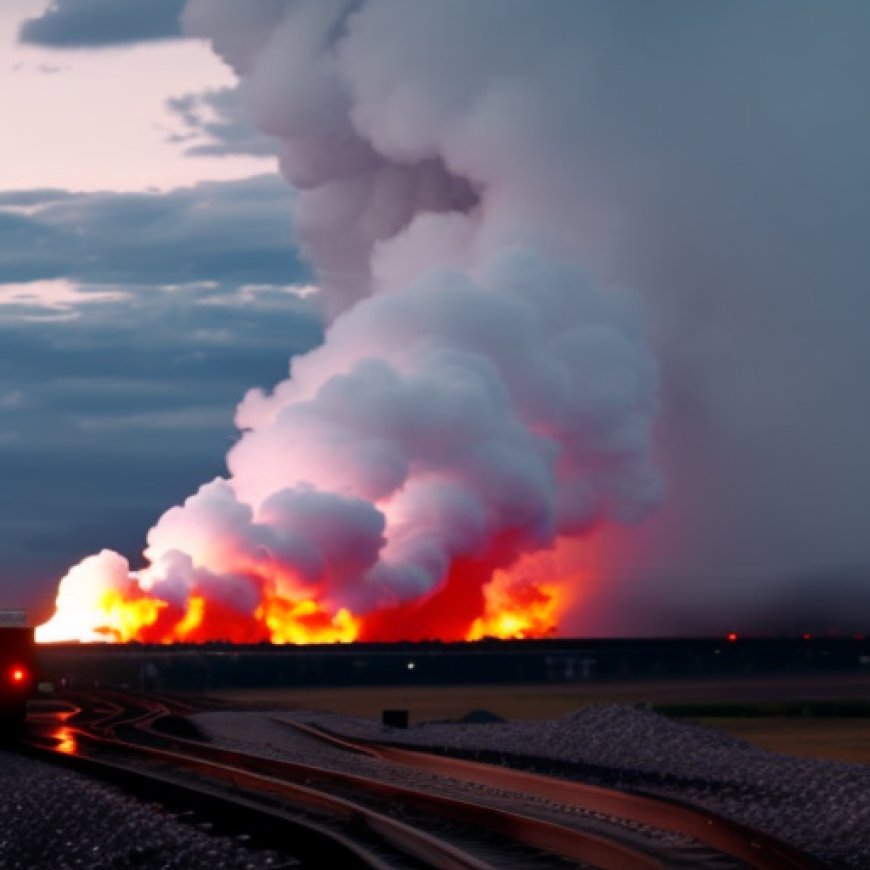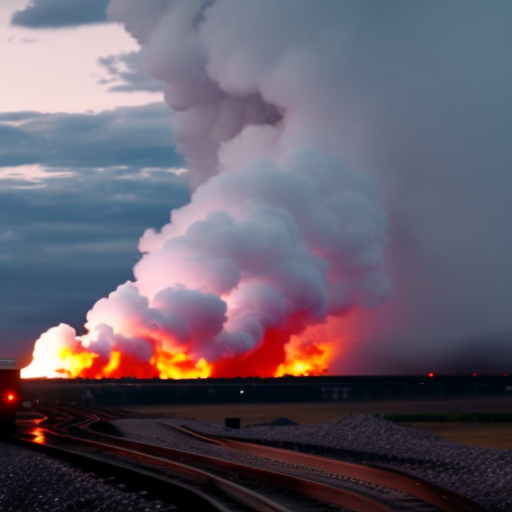Big oil is racing to scale up carbon capture to slash emissions but the challenges are immense
Big oil is racing to scale up carbon capture to slash emissions but the challenges are immense CNBC


Decarbonizing heavy industry
A paper mill in a small Mississippi town could help demonstrate whether capturing carbon dioxide emissions and storing it deep underground is a viable path to fight climate change.
The proposed project at International Paper’s mill in Vicksburg was chosen by the Department of Energy in February to receive up to $88 million in taxpayer funding. If successful, the system would capture and permanently store 120,000 tons of carbon dioxide annually, the equivalent of 27,000 gas-powered cars, according to the companies behind the project.
- Amazon, a partner in the project, sources containerboard from the mill for its boxes and packaging. SLB, the oilfield services giant formerly known as Schlumberger, is designing and engineering the carbon capture system in collaboration with RTI International, a nonprofit that developed the technology.
The Vicksburg paper mill project is just one example of how $12 billion in funding from the 2021 bipartisan infrastructure law is supporting the development of carbon capture technology across the United States, as part of the Biden administration’s efforts to achieve net-zero emissions by 2050.
Carbon capture and storage technology today is expensive, logistically complex and faces controversy over its role in the energy transition and safety concerns in communities where pipeline infrastructure would be expanded.
The challenges to implementing the technology are immense. The world needs to capture more than 1 billion metric tons of carbon dioxide annually by 2030, more than 20 times the 45 million metric tons captured in 2022, according to the IEA. By 2050, the amount of carbon that’s captured needs to reach 6 billion tons — more than 130 times the 2022 level, according to the agency.
The Vicksburg papermill project is still in an early development stage. SLB is confident that it will prove technologically viable, said Fred Majkut, senior vice president of carbon solutions at the company. The goal is to demonstrate that carbon capture and storage is also economically viable, Majkut said.
“The economic viability of carbon capture and sequestration is a challenge today because the cost of building most plants in order to capture carbon dioxide are very significant,” the executive said. It can cost hundreds of millions of dollars to retrofit an industrial plant, he said.
For International Paper, the Vicksburg project is a potential way to produce lower carbon products for consumers who are climate conscious and a potential opportunity to benefit financially through the sale of carbon credits.
“There are examples in the marketplace where customers have the opportunity to express their preferences economically, whether that’s clicking a button to say they want to abate the carbon emissions for a trip in an Uber or an airplane,” said Adam Miklos, director of low carbon innovation at International Paper.
“Ultimately, it has the potential to reduce our emissions and, if successful, present an opportunity to sell carbon and renewable credits,” Miklos said.
Chevron, Exxon building Gulf Coast hubs
The Gulf Coast of the United States, home to enormous oil and gas and other industrial plants, is emerging as a center of carbon capture and storage investments in the U.S.
Jeff Gustavson, vice president of lower carbon energies at Chevron, said the region has the potential to quickly increase use of the technology because of favorable geology for storage located close to high concentration emissions that are easier to capture at a lower cost. Some 100 million tons of carbon dioxide are emitted annually from Houston through to Port Arthur, Texas, Gustavson said.
Chevron and Exxon are targeting $10 billion and more than $20 billion, respectively, of spending on emissions-reducing technologies that include carbon capture and storage in major projects under development along the Gulf Coast.
Exxon over the past two years has entered agreements to capture carbon emissions from ammonia and fertilizer producer CF Industries and steelmaker Nucor, both in Louisiana, and industrial gas producer Linde in Beaumont, Texas. The country’s largest oil company is targeting a start-up date for a carbon capture and storage system at CF Industries in the first half of 2025.
Dan Ammann, president of low carbon solutions at Exxon, said those three contracts combined promise to remove 5 million tons of emissions annually — the equivalent of converting 2 million gas-powered cars to electric vehicles.
Exxon completed its acquisition of the carbon-dioxide pipeline operator Denbury for $5 billion in late 2023. The deal gave Exxon more than 900 miles of pipeline stretching through Mississippi, Louisiana and Texas that are located near at least 10 storage sites in the region.
“It gives us sort of instantaneous scale, instantaneous reach, across this huge source of emissions along the Gulf Coast,” Ammann said of the Denbury acquisition. “It gives us the ability to develop storage all along that pipeline as well.”
Exxon says it now owns the largest carbon dioxide pipeline network in the U.S. As the infrastructure comes together, Exxon is seeing “a very high level of interest from a lot of different emitters along the Gulf Coast,” Ammann said.
Pipeline opposition
Increasing carbon capture and storage to meet net-zero emissions goals in the U.S. will require a massive expansion of pipeline infrastructure. The Department of Energy estimates that the network of carbon dioxide pipelines needs to grow from about 5,200 miles currently to between 30,000 and 90,000 miles.
“The key is the right geology close by to concentrated emissions,” Gustavson said. “That’s where we see this scaling fastest first, but over time, we will need to build more CO2 infrastructure to be able to transport CO2 much longer distances to access the same storage.”
But the permitting process is challenging because pipelines often cross state lines, requiring lengthy approval from multiple jurisdictions and creating bottlenecks, Majkut said.
Pipeline expansion has faced opposition in communities where residents are worried about the safety of transporting carbon dioxide. In 2020, a pipeline owned by Denbury ruptured just outside the village of Satartia, Mississippi, leading to the release of more than 31,000 barrels of carbon dioxide. More than 40 people were hospitalized and 200 individuals were evacuated from the area. Denbury was fined nearly $2.9 million by the U.S. Transportation Department.
Denbury said in a 2022 report that it had upgraded equipment and procedures in the wake of the pipeline leak to “substantially reduce the risk of similar events in the future, as well as mitigate and diminish the consequences in the event they do occur.”
The Energy Department says carbon dioxide pipelines have a better safety record than natural gas pipelines and other large infrastructure such as electric transmission. There have been no deaths from carbon dioxide pipelines over the past two decades and one injury in addition to the hospitalizations from the Satartia incident, according to the Transportation Department.
SDGs, Targets, and Indicators
1. Which SDGs are addressed or connected to the issues highlighted in the article?
- SDG 7: Affordable and Clean Energy
- SDG 9: Industry, Innovation, and Infrastructure
- SDG 13: Climate Action
- SDG 17: Partnerships for the Goals
2. What specific targets under those SDGs can be identified based on the article’s content?
- SDG 7.2: Increase substantially the share of renewable energy in the global energy mix.
- SDG 9.4: Upgrade infrastructure and retrofit industries to make them sustainable.
- SDG 13.2: Integrate climate change measures into national policies, strategies, and planning.
- SDG 17.17: Encourage and promote effective public, public-private, and civil society partnerships.
3. Are there any indicators mentioned or implied in the article that can be used to measure progress towards the identified targets?
- Investment in carbon management technologies ($1.2 billion in 2023).
- Total spending on carbon capture and storage projects ($241 billion worldwide by 2030).
- Number of carbon capture and storage projects reaching a final investment decision (5% of announced projects).
- Amount of carbon dioxide captured annually (1 billion metric tons by 2030, 6 billion tons by 2050).
Table: SDGs, Targets, and Indicators
| SDGs | Targets | Indicators |
|---|---|---|
| SDG 7: Affordable and Clean Energy | Increase substantially the share of renewable energy in the global energy mix. | Investment in carbon management technologies ($1.2 billion in 2023). |
| SDG 9: Industry, Innovation, and Infrastructure | Upgrade infrastructure and retrofit industries to make them sustainable. | Total spending on carbon capture and storage projects ($241 billion worldwide by 2030). |
| SDG 13: Climate Action | Integrate climate change measures into national policies, strategies, and planning. | Number of carbon capture and storage projects reaching a final investment decision (5% of announced projects). |
| SDG 17: Partnerships for the Goals | Encourage and promote effective public, public-private, and civil society partnerships. | Amount of carbon dioxide captured annually (1 billion metric tons by 2030, 6 billion tons by 2050). |
Behold! This splendid article springs forth from the wellspring of knowledge, shaped by a wondrous proprietary AI technology that delved into a vast ocean of data, illuminating the path towards the Sustainable Development Goals. Remember that all rights are reserved by SDG Investors LLC, empowering us to champion progress together.
Source: cnbc.com

Join us, as fellow seekers of change, on a transformative journey at https://sdgtalks.ai/welcome, where you can become a member and actively contribute to shaping a brighter future.







